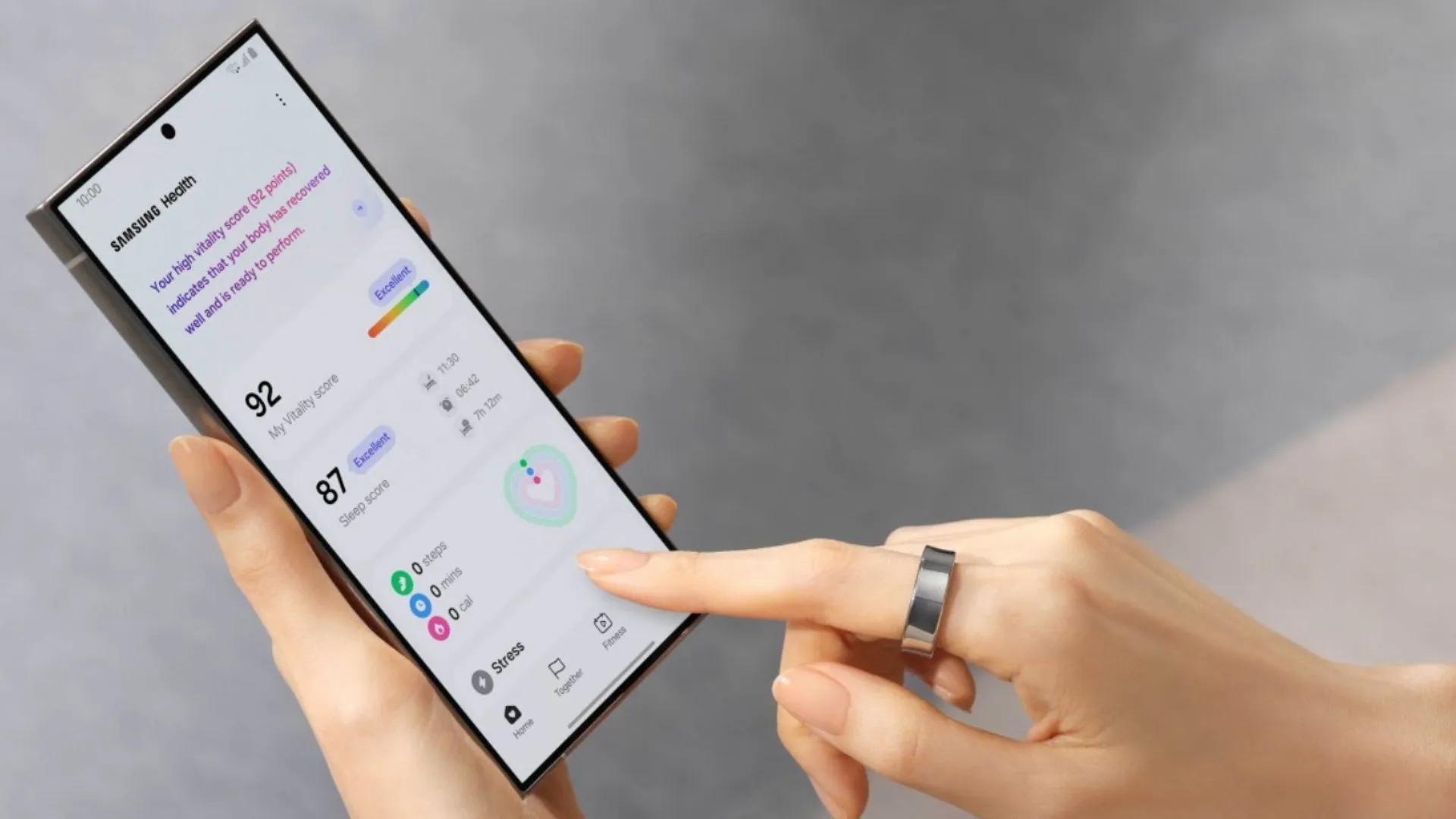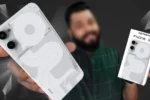Samsung Galaxy Rings: Future Features and Competition

As the smart wearable market continues to evolve, Samsung is making strides with its innovative Galaxy Ring, a device that promises to do more than just track health metrics. With the recent filing of a patent that hints at exciting new features, the future of these smart rings could include capabilities like remote control of other devices, potentially giving Samsung a significant edge over competitors like Oura and Ultrahuman. As we explore the possibilities that lie ahead for the Galaxy Ring, it’s clear that this technology could revolutionize our interaction with smart devices, merging convenience and functionality in unprecedented ways.
| Feature | Description | Potential Benefits |
|---|---|---|
| Galaxy Ring Overview | Samsung’s smart ring that began the entry into the smart ring market. | Provides basic health tracking without a subscription. |
The Future of Samsung Galaxy Rings: More Than Health Tracking
Samsung’s future Galaxy Rings are set to revolutionize wearable technology beyond just health tracking. While the current Galaxy Ring focuses on fitness metrics, future models may integrate advanced features like remote control for other devices. This means users could manage their laptops or tablets directly through their rings, making daily tasks more convenient. Imagine adjusting your TV volume or moving files simply with a flick of your wrist! This innovation could change how we interact with our devices.
In addition to health metrics, the Galaxy Rings could enhance user experience by connecting seamlessly with other Samsung products. For instance, users might control smart home devices or share files effortlessly with a simple gesture. This not only adds functionality but also creates a more interconnected ecosystem for Samsung users. As technology advances, the possibilities for these smart rings expand, potentially giving Samsung a significant edge in the competitive wearable market.
Samsung’s Competitive Edge in Smart Wearable Technology
The introduction of advanced features in future Galaxy Rings could provide Samsung with a vital competitive edge over other brands. Unlike competitors that may require subscriptions for full access, the Galaxy Ring could offer similar functionalities without extra costs. This advantage might attract more users who are looking for smart wearables that are both efficient and economical. By focusing on user-friendly features, Samsung can position itself as a leader in the smart ring market.
Moreover, as Samsung continues to innovate, the potential for the Galaxy Ring to control other devices could set it apart from competitors like Oura. If the technology allows easy file transfers or device management through gestures, it could redefine the user experience. This could make the Galaxy Ring not just a health tracker, but an essential tool for managing everyday technology, further solidifying Samsung’s place in the rapidly evolving world of smart wearables.
Exciting Features on the Horizon for Galaxy Rings
The future of Samsung Galaxy Rings looks promising with features that go beyond fitness tracking. Recent patents hint at exciting capabilities like controlling displays on other devices. Imagine being able to slide your finger to share files or move content between your tablet and laptop without touching the screens! Such features would make the Galaxy Ring incredibly useful, especially for those who use multiple devices daily.
While these features are still in the patent phase and not guaranteed, they reflect Samsung’s vision for a more integrated user experience. If realized, these smart rings could transform how we interact with technology in our daily lives. They could make tasks simpler and more intuitive, allowing for a seamless flow of information between devices. As we look forward to these advancements, it’s clear that the Galaxy Ring could become an essential part of our tech-savvy lives.
Exploring the Multifaceted Applications of Galaxy Rings
The upcoming Galaxy Rings may serve various purposes beyond health monitoring, potentially revolutionizing how users interact with technology. With the capability to connect and control multiple devices, these smart rings could facilitate seamless integration into daily life. Imagine adjusting your smart home settings, switching music tracks, or even answering calls with a simple gesture. This versatility positions the Galaxy Rings as a multifaceted tool that enhances user convenience and efficiency.
Moreover, as the smart ring industry continues to evolve, Samsung’s investment in innovative features could set its products apart from competitors. While health tracking remains a key selling point, the added functionalities could appeal to a broader audience looking for more than just fitness data. This expansion into multiple applications will likely capture the interest of tech enthusiasts and everyday users alike, making the Galaxy Ring a compelling choice in a crowded market.
Samsung’s Competitive Edge in the Smart Wearable Market
Samsung’s entry into the smart ring arena with the Galaxy Ring presents a unique opportunity to carve out a competitive edge against established players like Oura. By integrating features that allow control over other devices, Samsung can position its product as an all-in-one solution that caters to diverse user needs. This potential for cross-device functionality not only enhances user experience but also fosters brand loyalty as consumers appreciate the convenience of a cohesive ecosystem.
Additionally, the absence of subscription fees for health tracking features gives Samsung an advantage, appealing to budget-conscious consumers who seek value. As users become more aware of hidden costs associated with fitness technology, the Galaxy Ring’s straightforward pricing model could draw in those hesitant to commit to ongoing payments. This strategic approach, combined with innovative capabilities, positions Samsung favorably against competitors, ensuring it remains a relevant player in the wearables market.
The Future of Smart Rings: Innovations on the Horizon
As technology progresses, the future of smart rings looks promising, with innovations that could transform user interaction with devices. The patents filed by Samsung hint at groundbreaking features such as gesture controls that allow users to manage their laptops or tablets effortlessly. This integration could redefine how we engage with our devices, making interactions more intuitive and fluid. Such advancements not only enhance usability but also align with the growing trend of smart home integration.
However, while these advancements are exciting, it’s essential to approach them with cautious optimism. The fact that patents highlight potential features does not guarantee implementation in upcoming models. Nevertheless, Samsung’s commitment to exploring new capabilities demonstrates its intention to lead the smart wearables market. Users can look forward to a future where everyday tasks are streamlined through wearable technology, making life more connected and convenient.
Understanding the Limitations of Current Technology
Despite the exciting prospects of future Galaxy Rings, it’s important to recognize the limitations of current technology. The existing model may not provide as extensive data as its competitors, which could deter some users seeking comprehensive analytics. Additionally, while the ability to connect to other devices is a promising feature, it requires a stable wireless network, which may not always be available. Such limitations must be addressed to ensure users can fully benefit from the potential advantages.
Furthermore, the integration of new technologies often comes with challenges, including user adaptation and device compatibility. As Samsung pushes forward with innovative features, it will need to ensure that these advancements are user-friendly and accessible. Maximizing the user experience while minimizing complexity will be crucial for the Galaxy Rings to succeed in a competitive landscape, ensuring that they meet the needs of a diverse audience.
Frequently Asked Questions
What is the Samsung Galaxy Ring and what can it do?
The **Samsung Galaxy Ring** is a smart ring that tracks your health. It can monitor things like your heart rate and sleep, and it works with the Galaxy Watch for extra features.
How might future Galaxy Rings control other devices?
Future **Galaxy Rings** could connect to devices like laptops and tablets. They might allow you to control screens by **gestures**, like moving items or sharing files without touching the device.
Do I need to pay for using the Galaxy Ring’s health features?
No, the Galaxy Ring does not require a **subscription** for health tracking. You can access its features without any extra payments, unlike some other smart rings.
What are patents and why are they important for technology?
A **patent** is a legal document that protects an invention. It’s important because it shows that a company, like Samsung, has new ideas that they might use in future products.
What was shown at CES 2025 regarding Samsung devices?
At **CES 2025**, Samsung showed how the Galaxy Watch 7 can control a **Samsung TV**. This suggests that future Galaxy Rings might also control other Samsung gadgets.
Will the new features of Galaxy Rings definitely be available?
Not necessarily. Just because Samsung filed a patent for new features, it doesn’t mean they will be included in the Galaxy Rings. It’s still possible they might change.
How do Galaxy Rings work with Wi-Fi?
To control other devices, Galaxy Rings need to be on the same **wireless network** as those devices. This means they need to connect to the same Wi-Fi to communicate.
Summary
The content discusses the potential features of future Samsung Galaxy Rings, emphasizing their capability to connect and control other devices remotely. A recently filed patent suggests that these smart rings may allow users to manage displays and transfer content through gestures. Unlike competitors, the Galaxy Ring does not require a subscription for health tracking and offers integration with the Galaxy Watch. Although the technology is still speculative, the patent indicates that future models could enhance user interaction across devices, provided they are on the same wireless network. Overall, the Galaxy Ring aims to expand functionality beyond health monitoring.






